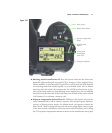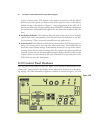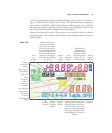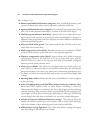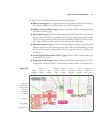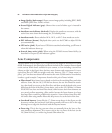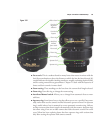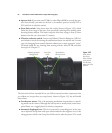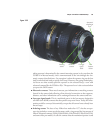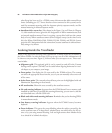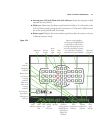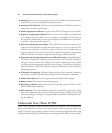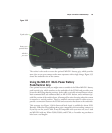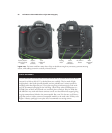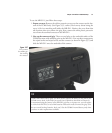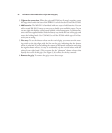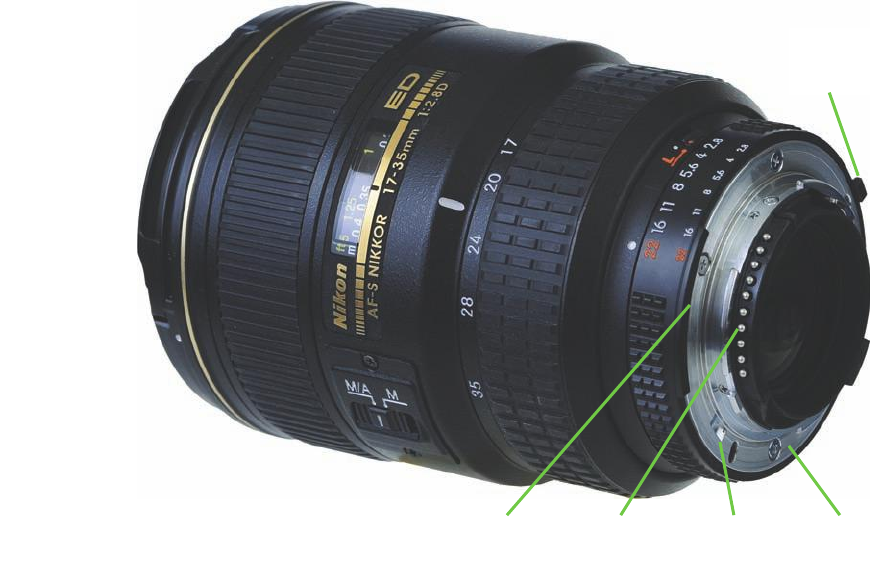
taking aperture is determined by the camera’s metering system (or by you when the
D7000 is in Manual mode), and is communicated to the lens through the elec-
tronic contacts described next. (An exception is when the aperture ring on the lens
itself is unlocked and used to specify the f/stop.) However, the spring-loaded phys-
ical levers are what actually push the aperture to the selected f/stop—even with
advanced cameras like the D7000 or D3s. The aperture lever is also activated when
you press the DOF button.
■ Electronic contacts. These metal contacts pass information to matching contacts
located in the camera body allowing a firm electrical connection so that exposure,
distance, and other information can be exchanged between the camera and lens.
■ Lens type signal notch. This is a machined groove in the lens mount, designed to
tell older (non-dSLR) cameras that the aperture stops were linear. Today, this infor-
mation would be conveyed electronically, except that all current lenses already have
linear f/stops.
■ Indexing cutout. The base of any Nikon lens made after 1977 that has an aper-
ture ring includes a cutout notch that mates with a ring around the lens mount of
Nikon’s advanced cameras (D200, D300/D300s, D2x/D2xs/D3/D3s/D3x/D700,
and some older pro models). It tells the camera what the maximum aperture is and
Chapter 3 ■ Nikon D7000 Roadmap 85
Figure 3.33
Automatic
diaphragm
lever
Indexing
cutout
Electronic
contacts
Lens type
signal
notch
Lens
bayonet
mount



